SLUSCE3C October 2015 – August 2020 TPS2549-Q1
PRODUCTION DATA
- 1 Features
- 2 Applications
- 3 Description
- 4 Revision History
- 5 Pin Configuration and Functions
- 6 Specifications
- 7 Parameter Measurement Information
-
8 Detailed Description
- 8.1 Overview
- 8.2 Functional Block Diagram
- 8.3 Feature Description
- 8.4 Device Functional Modes
- 9 Application and Implementation
- 10Power Supply Recommendations
- 11Layout
- 12Device and Documentation Support
- 13Mechanical, Packaging, and Orderable Information
Package Options
Mechanical Data (Package|Pins)
- RTE|16
Thermal pad, mechanical data (Package|Pins)
- RTE|16
Orderable Information
6.7 Typical Characteristics
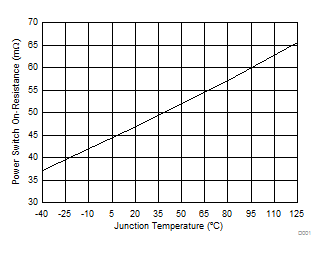
| VIN = 5 V |
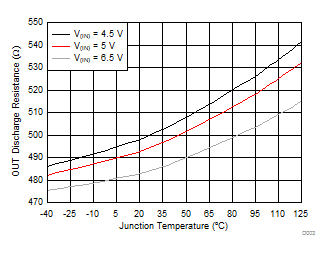
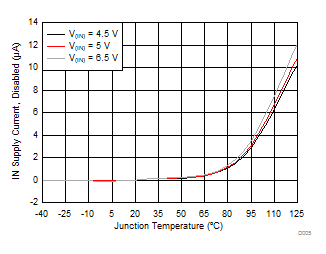
| CTL1 = 1 | CTL2 = 1 | CTL3 = 1 |
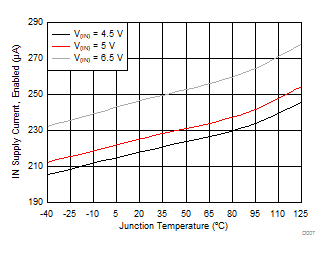
| CTL1 = 0 | CTL2 = 0 | CTL3 = 1 |
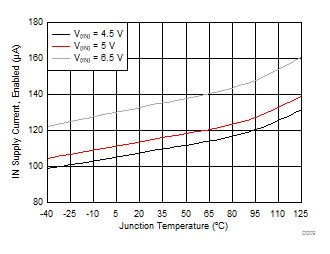
| CTL1 = 1 | CTL2 = 0 | CTL3 = 0 |
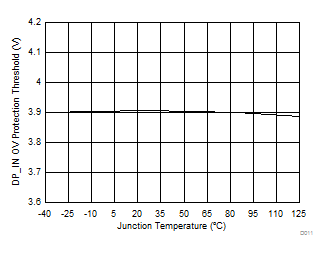
| VIN = 5 V |
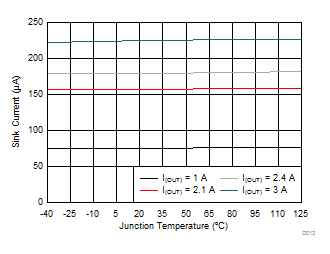
| VIN = 5 V | VCS = 2. 5 V |
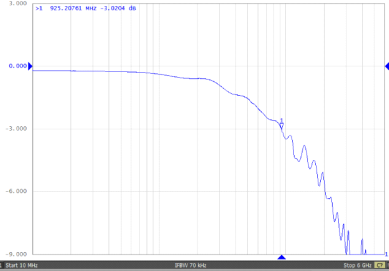 Figure 6-15 Data
Transmission Characteristics vs Frequency
Figure 6-15 Data
Transmission Characteristics vs Frequency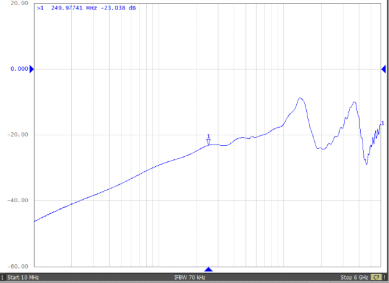 Figure 6-17 On-State Cross-Channel Isolation vs Frequency
Figure 6-17 On-State Cross-Channel Isolation vs Frequency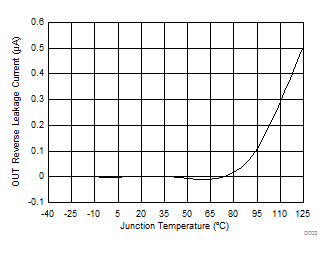
| VIN = 5 V |
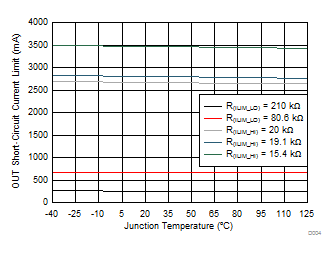
| VIN = 5 V |
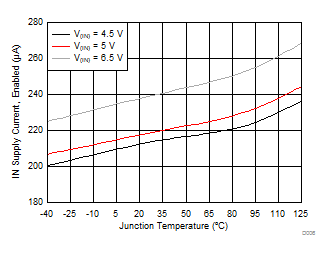
| CTL1 = 1 | CTL2 = 1 | CTL3 = 1 |
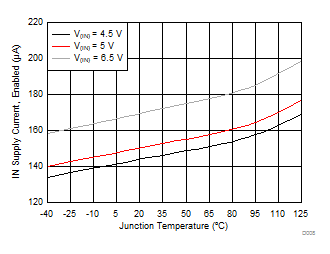
| CTL1 = 0 | CTL2 = 1 | CTL3 = 0 |
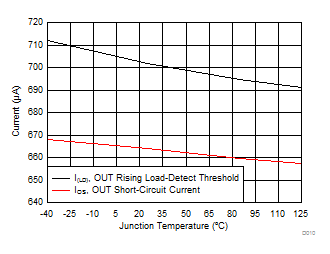
| R(ILIM_LO) = 80.6 kΩ |
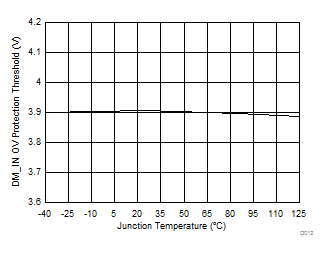
| VIN = 5 V |
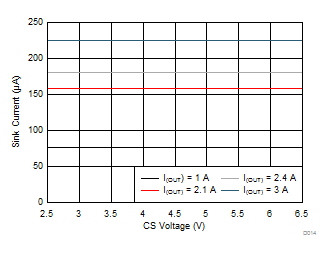
| VIN = 6.5 V |
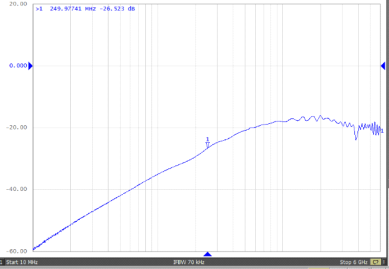 Figure 6-16 Off-State Data-Switch Isolation vs Frequency
Figure 6-16 Off-State Data-Switch Isolation vs Frequency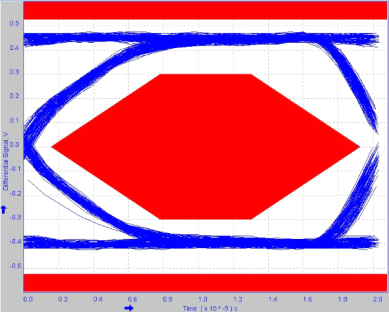 Figure 6-18 Eye
Diagram Using USB Compliance Test Pattern, Bypassing the TPS2549-Q1 Data
Switch
Figure 6-18 Eye
Diagram Using USB Compliance Test Pattern, Bypassing the TPS2549-Q1 Data
Switch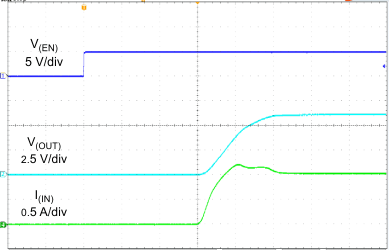
| R(LOAD) = 5 Ω | C(LOAD) = 150 µF | t = 1 ms/div |
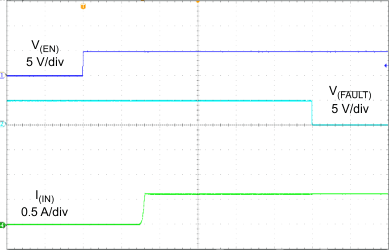
| R(ILIM_HI) = 80.6 kΩ | t = 2 ms/div |
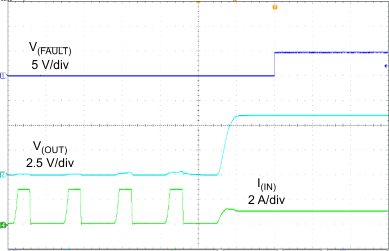
| R(ILIM_HI) = 19.1 kΩ | t = 4 ms/div |
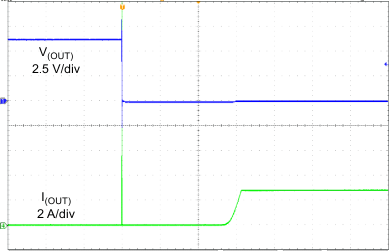
| R(ILIM_HI) = 19.1 kΩ | R(SHORT) = 50 mΩ | t = 1 ms/div |
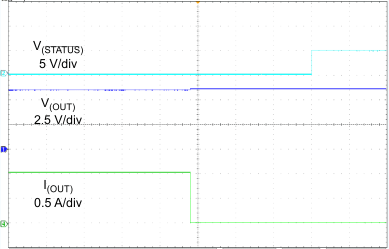
| R(ILIM_LO) = 80.6 kΩ | t = 1 s/div |
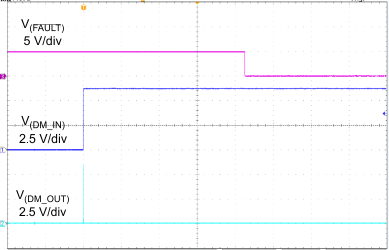
| R(DM_OUT) = 15 kΩ | t = 4 ms/div |
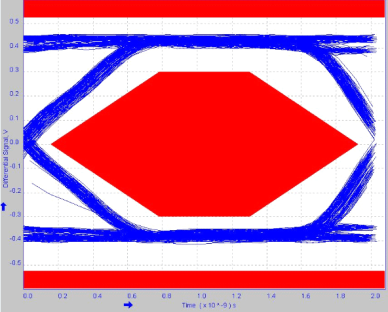 Figure 6-19 Eye
Diagram Using USB Compliance Test Pattern, Through the TPS2549-Q1 Data
Switch
Figure 6-19 Eye
Diagram Using USB Compliance Test Pattern, Through the TPS2549-Q1 Data
Switch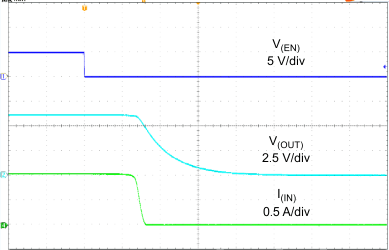
| R(LOAD) = 5 Ω | C(LOAD) = 150 µF | t = 1 ms/div |
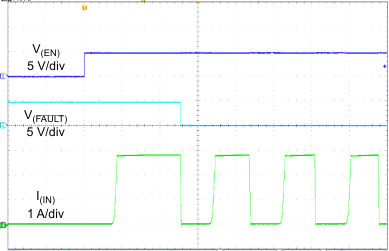
| R(ILIM_HI) = 19.1 kΩ | t = 4 ms/div |
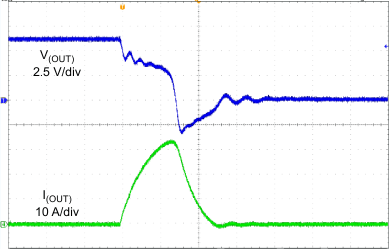
| R(SHORT) = 50 mΩ | t = 1 µs/div |
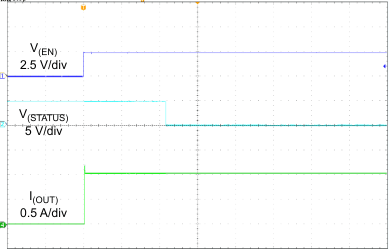
| R(ILIM_LO) = 80.6 kΩ | t = 100 ms/div |
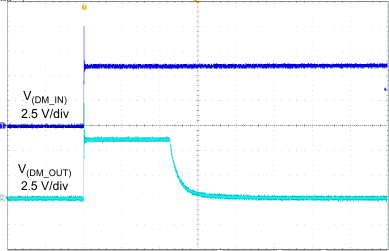
| R(DM_OUT) = 15 kΩ | t = 1 µs/div |
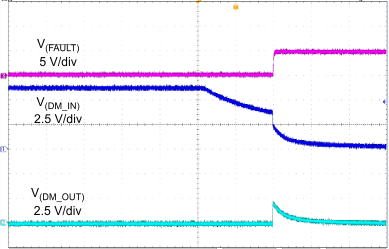
| R(DM_OUT) = 15 kΩ | t = 1 µs/div |